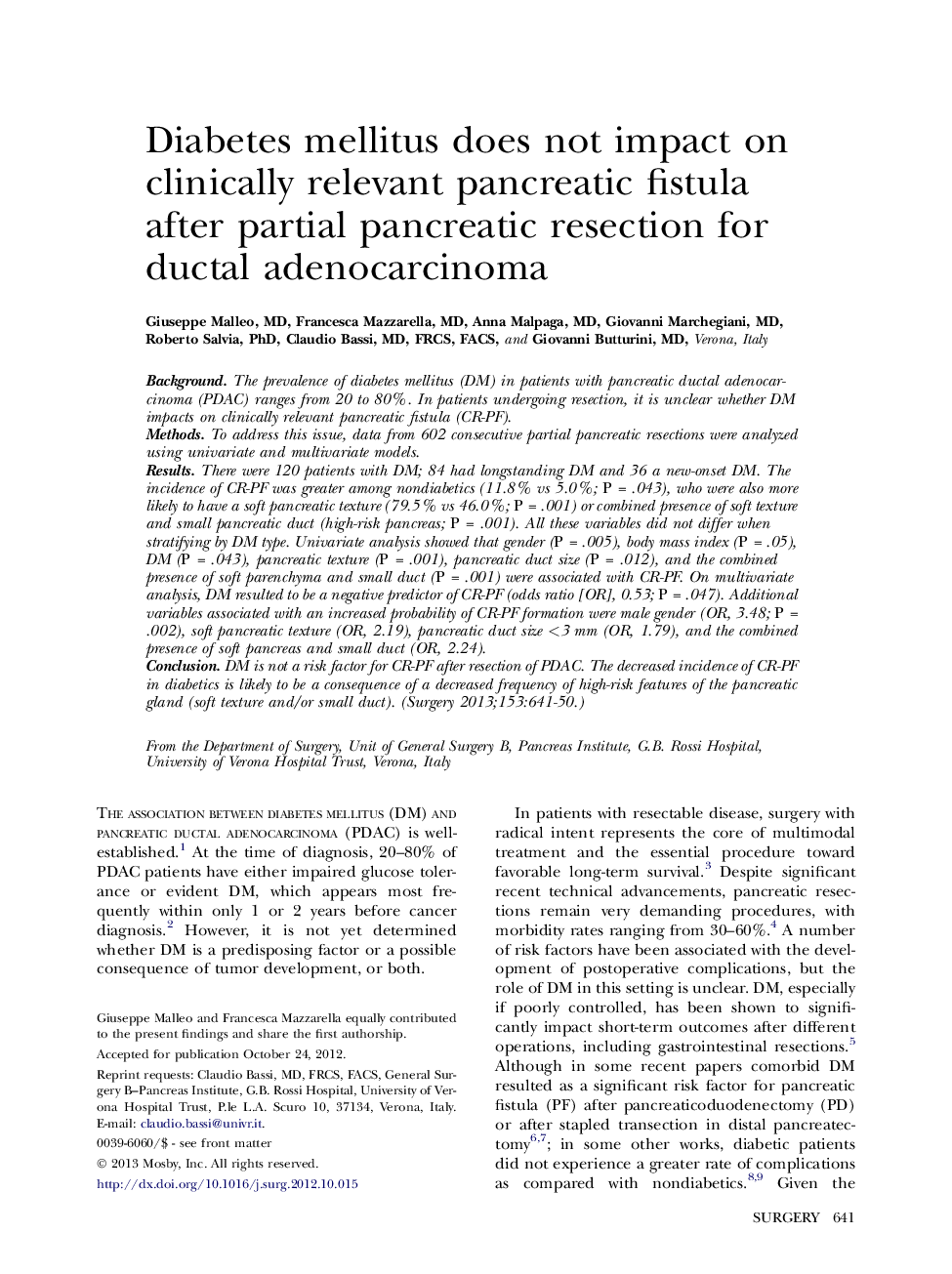| Article ID | Journal | Published Year | Pages | File Type |
|---|---|---|---|---|
| 4307094 | Surgery | 2013 | 10 Pages |
BackgroundThe prevalence of diabetes mellitus (DM) in patients with pancreatic ductal adenocarcinoma (PDAC) ranges from 20 to 80%. In patients undergoing resection, it is unclear whether DM impacts on clinically relevant pancreatic fistula (CR-PF).MethodsTo address this issue, data from 602 consecutive partial pancreatic resections were analyzed using univariate and multivariate models.ResultsThere were 120 patients with DM; 84 had longstanding DM and 36 a new-onset DM. The incidence of CR-PF was greater among nondiabetics (11.8% vs 5.0%; P = .043), who were also more likely to have a soft pancreatic texture (79.5% vs 46.0%; P = .001) or combined presence of soft texture and small pancreatic duct (high-risk pancreas; P = .001). All these variables did not differ when stratifying by DM type. Univariate analysis showed that gender (P = .005), body mass index (P = .05), DM (P = .043), pancreatic texture (P = .001), pancreatic duct size (P = .012), and the combined presence of soft parenchyma and small duct (P = .001) were associated with CR-PF. On multivariate analysis, DM resulted to be a negative predictor of CR-PF (odds ratio [OR], 0.53; P = .047). Additional variables associated with an increased probability of CR-PF formation were male gender (OR, 3.48; P = .002), soft pancreatic texture (OR, 2.19), pancreatic duct size <3 mm (OR, 1.79), and the combined presence of soft pancreas and small duct (OR, 2.24).ConclusionDM is not a risk factor for CR-PF after resection of PDAC. The decreased incidence of CR-PF in diabetics is likely to be a consequence of a decreased frequency of high-risk features of the pancreatic gland (soft texture and/or small duct).
